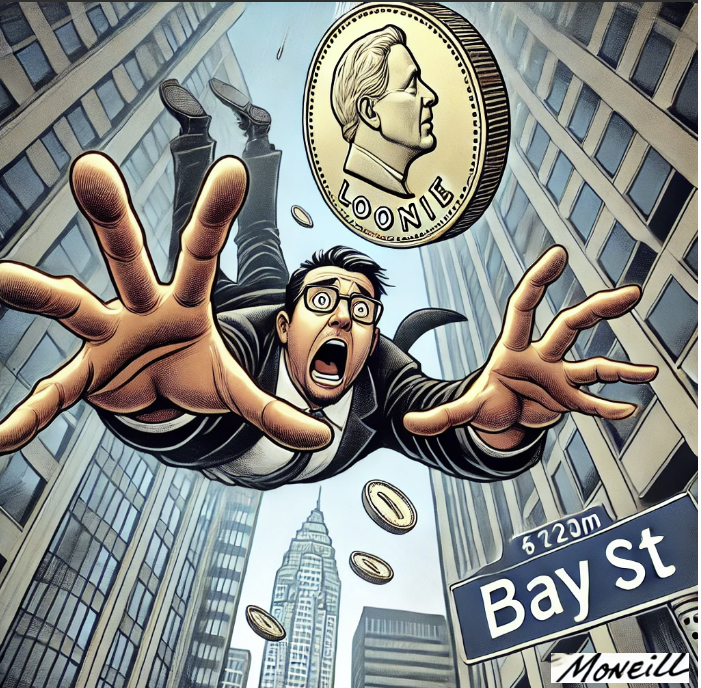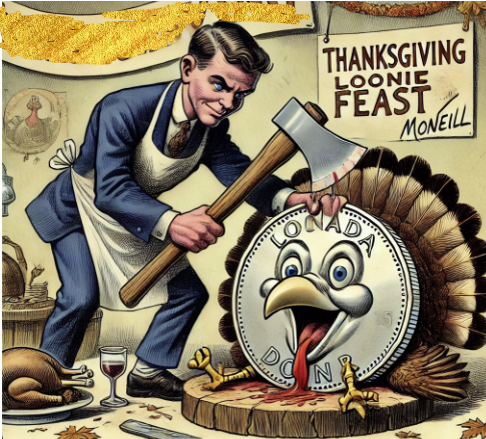
By Michael O’Neill
“The Canadian dollar is staring into the abyss, and the abyss is staring back—with Canadian dollar buyers as scarce as Indian diplomats in Ottawa. Sentiment has taken a turn for the worse, from the scorching days of August when the Loonie was soaring like a SpaceX Falcon 9, to mid-October, where it’s crashing like the NASA Challenger.
Summer Flashback
Throughout August, the Canadian dollar rallied continuously. Traders and analysts were betting that the U.S. Federal Reserve would be more aggressive in cutting rates than the Bank of Canada. This belief was fueled by a far weaker-than-expected U.S. July nonfarm payrolls report, which saw only 114,000 new jobs created, alongside a sharp downward revision to June’s figures (from 209,000 to 118,000). This triggered a massive U.S. dollar sell-off, even sparking rumors of an emergency FOMC meeting to prevent a hard landing.
Bond Traders were so convinced of such a move, the US 10-year Treasury yield collapsed from 4.06% on August 1 to 3.65% on August 5. Suddenly, nobody wanted US dollars, and the Loonie soared, leading some to warn of an emergency Fed meeting.
“Wakey-Wakey” Your CAD View is Shakey

The emergency meeting never happened. Mr. Powell’s comments to the National Association for Business Economics that “the time has come for policy to adjust” were a rude awakening to those expecting a sharp plunge in U.S. interest rates to 4.0% or lower by year-end. His post-FOMC meeting press conference wasn’t any better. Although the Fed cut rates by 50 bps, Mr. Powell was not nearly as dovish as anticipated, saying that the move wasn’t an admission the Fed was behind the curve but was instead it was a recalibration to better reflect economic conditions.
“It’s a Long Way to the To the Top (If You want to Rock and Roll)

Source: ACDC.com
Canadian dollar bears are learning that lesson the hard way. Just when it looked like the Loonie was heading to the top of the charts, BoC Governor chimed in saying, “with inflation getting closer to the target, we need to increasingly guard against the risk that the economy is too weak, and inflation falls too much.”
Well, Mr Macklem, the economy is too weak. It is a laggard compared to the US and that is really the only other economy that counts. Canada’s 2024 economic growth is projected at 1.3%, which is lower than in 2023. Pundits point the employment report. Canada added 46,700 jobs in September on top of the 22,100 gained in August. The data is dodgy. Reportedly, Canada added 312,600 jobs in the year ending September 2024, but over 40% were in the public sector. RBC economists point out that the number of job openings is 25% less than it was a year ago and that the unemployment rate is higher than pre-pandemic levels.
The BoC fears deflation and the latest Business Outlook Survey indicates businesses expect inflation to keep falling.
Loonie on the Chopping Block

Heads will roll and it will be the Loonie which becomes “sans cranium.” That’s because the weak Canadian economy will force the Bank of Canada to cut quickly and deeply. The following Canadian Bank forecast project an average Bank rate of 2.66% by the end of 2025. Meanwhile, the Federal Reserve is expected to reduce rates gradually, aiming for a federal funds rate of around 3.25% to 3.5% by the end of 2025. How far will the Canadian dollar have to fall before foreign investors deem it worth buying?
The price action since August 2022 suggests USDCAD could rally to the Covid-19 peak of 1.4635 or CAD68.3 cents. It wouldn’t be a one-way move as resistance at 1.4000 will prove sticky. A decisive break above 1.4000 suggests a steep, sharp rally to 1.4600, while failure to break above 1.4000 means, the loonie dodged a bullet (or axe) and a retrace to 1.3200 is in the cards.
The abyss is calling the Loonie, and it will be Bank of Canada decisions that tip it over the edge.

Source: Canadian mortgagetrends.com





